Hiero
The Foundry today announced a new version of Hiero, their shot management, conform and review tool. In addition a new product, Hieroplayer, was announced which gives artists the ability to view their VFX shots in the context of a cut or edit timeline.
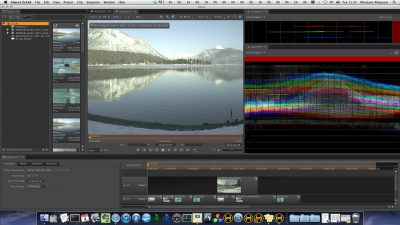 According to the company, both releases will be available to purchase “this Autumn” (we assume around Nov 2012). Hiero 1.5 also supports Windows OS. This allows even wider studio adoption. Hiero users can now use a broadcast monitor to review footage via a compatible Blackmagic or AJA SDI-Out Hardware. The Broadcast Monitor Out functionality will give Hiero operators the ability to accurately check that the color space and aspect ratio is exactly the same as it would be when the footage is broadcast. With the addition of Multi-Channel Image Support, users will now also be able to view all the image layers of multi-channel EXRs for CG passes. Operators will have access to more than just the RGBA pass and view all of the image passes that EXR files can contain, just as they can in Nuke.
According to the company, both releases will be available to purchase “this Autumn” (we assume around Nov 2012). Hiero 1.5 also supports Windows OS. This allows even wider studio adoption. Hiero users can now use a broadcast monitor to review footage via a compatible Blackmagic or AJA SDI-Out Hardware. The Broadcast Monitor Out functionality will give Hiero operators the ability to accurately check that the color space and aspect ratio is exactly the same as it would be when the footage is broadcast. With the addition of Multi-Channel Image Support, users will now also be able to view all the image layers of multi-channel EXRs for CG passes. Operators will have access to more than just the RGBA pass and view all of the image passes that EXR files can contain, just as they can in Nuke.
HIERO 1.5 also adds support for playback of native ARRIRAW camera footage. Users can either edit directly with the raw footage or transcode out to other image formats using Hiero’s export system.
Hieroplayer can open Hiero projects, allowing artists to see their shots in the context of a conformed, multi-track timeline and critique versions of their renders. Artists will be able to playback the same formats that Nuke knows about (including multi-channel EXRs, and audio), organize and tag their comp elements into Clip Bins, and even knock together basic ‘scratch edits’. Hieroplayer works seamlessly with Nuke and Hiero out of the box and via Python scripting, can also be integrated into other apps in a pipeline.
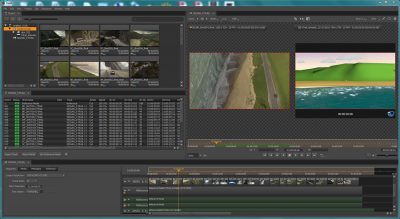
Ant Nasce, Hiero Product Manager at The Foundry commented: “With the addition of broadcast monitor support, Hiero 1.5 is now the ideal tool for doing VFX reviews. We’re excited to make Hiero available for Windows, (as well as Linux and Mac) which means that you can now run Hiero in the OS your facility prefers. Hieroplayer is a new VFX timeline tool that we believe artists (and supervisors alike) are going to love, because it bridges another missing link in the post-production pipeline.”
Nuke 7
The new release of Nuke 7.0 is packed with a wide range of new features and improvements. The updated version will be available to purchase again, the company said, “this Autumn”. Based on feedback from Nuke’s user-base, this version of Nuke is faster and more user-optimised. As well as some very exciting new additions, the focus of this release has been to really increase performance and adding support for open source items such as Alembic and OpenEXR 2.0 Deep Data. Nuke already supported deep compositing but now it supports the new OpenEXR 2 format as well. Weta, for example, has been doing great work with deep image compositing using the current release. Similarly, the huge take-up of Alembic has greatly helped in model workflows and reduced data complexity. It should be noted that all the Foundry products also include OpenColor as another open source community commitment.
Nuke 7.0 introduces RAM cache, a sought after feature that will give users realtime playback, a huge benefit to many users. Also in this release are a variety of GPU accelerated nodes for NukeX including MotionBlur, Kronos, Denoise, VectorGenerator, Convolve and ZDefocus. For some time The Foundry has been working on GPU core technology and now Nuke is really benefiting from this. This is a fundamental improvement that will allow users to utilize the power of their GPUs to seriously speed up interactive image processing times. When the GPU is available, NukeX will now take full advantage of that power. If however it’s unavailable, the software simply reverts back to the CPU without any need to adjust settings – it is all handled behind the scenes.
Jon Wadelton, Nuke Product Manager at The Foundry commented: “This is the one people have been waiting for. It’s our biggest ever update to Nuke and one that’s going to keep a lot of VFX people happy. Core tools have been improved, brand new functionality has been added and Nuke is now faster than ever. We are really proud of it and can’t wait to get the release out later this year.”
Nuke 7.0 also brings with it a number of options that allow artists to do more within Nuke. Users are now able to perform lighting tasks in a comp using the ReLight node and even model using NukeX’s new ModelBuilder. This is very useful in a variety of ways and was very impressive when demo’d at The Foundry user group in SIGGRAPH (LA) last month. Both of these additions reduce the need for artists to jump in and out of other programs or hand work off to other departments.
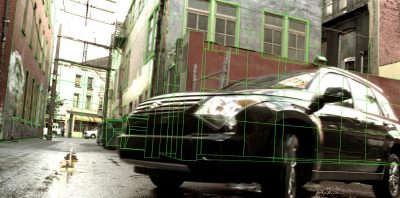
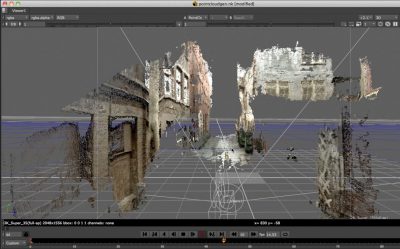
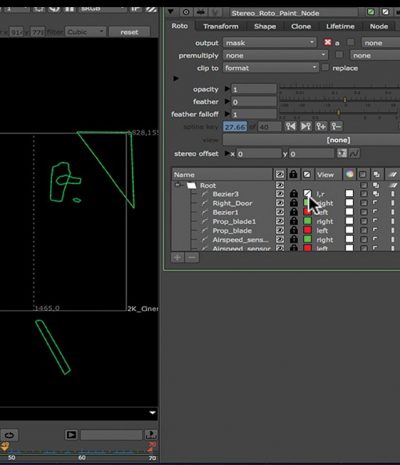
It make not be as sexy as the Modelbuilder but perhaps more importantly the roto tools in Nuke have been entirely redefined to enhance performance and improve stereo support, giving artists more control than ever before. Support for new camera raw formats has been added including Alexa ARRIRAW and the latest R3D SDK. Nuke 7.0 includes Primatte 5 and a brand new 2D tracker with big updates to the workflow and speed. The SplineWarp node and Dope Sheet have also benefited from major improvements.
Nuke 7 goes into public beta today, and will ship well before the end of the year.
